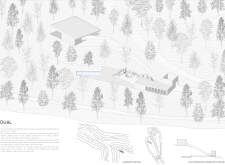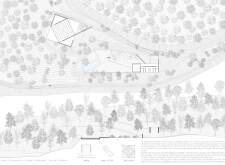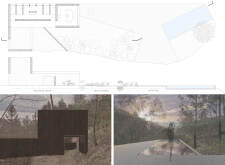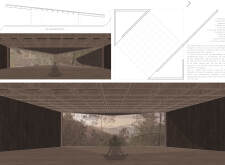5 key facts about this project
The architectural project under analysis is a contemporary public library designed to serve as a resource and community hub. This facility embodies a modern approach to library architecture, focusing on accessibility, sustainability, and multifunctionality. Its primary function is to provide a space for literacy, learning, and social interaction, while its design encourages engagement with both the built environment and surrounding landscape.
The architecture showcases a harmonious integration with its geographical context, reflecting local cultural motifs and utilizing materials that resonate with the region. The overall design emphasizes open spaces filled with natural light, promoting an inviting atmosphere conducive to study and collaboration. The layout is strategically organized to enhance user experience, with distinct areas dedicated to children's literature, adult resources, and community meeting spaces.
The primary structural elements include a carefully articulated facade that features large, glass panels allowing natural light to penetrate deep into the interior. This transparency fosters a connection between the library and its surroundings, blurring the lines between indoor and outdoor spaces. Additionally, the use of green roofs and terraced landscaping not only contributes to the aesthetic appeal but also addresses environmental concerns, enhancing the building's sustainability profile.
Innovative Design Approaches
One of the unique aspects of this project lies in its adaptive use of space and materials. The library incorporates modular design elements that allow for flexibility in programming and the rearrangement of spaces according to community needs. The integration of smart technology throughout the facility is another hallmark of the project, including features such as automated climate control and digital resource access points that cater to the demands of modern library users.
Moreover, the thoughtful selection of materials—such as reclaimed wood, recycled metal, and high-performance glazing—demonstrates a commitment to sustainability without compromising aesthetic value. These materials contribute not only to the building's ecological footprint but also provide a tactile quality that enhances the user experience.
Sustainability and Community Integration
This library project actively prioritizes sustainability through its architectural decisions. The design incorporates solar panels and rainwater harvesting systems, showcasing a dedication to energy efficiency and resource conservation. Additionally, the site planning emphasizes connections to public transportation and pedestrian pathways, reinforcing its role as a community anchor and promoting environmental responsibility.
The inclusion of outdoor reading areas and community gardens further extends the library’s mission beyond its walls, encouraging interaction and fostering a sense of community. This integration of natural elements into the library's design highlights the importance of green spaces in urban environments, offering a tranquil refuge for patrons.
For a comprehensive understanding of the architectural plans, sections, designs, and innovative ideas that define this project, readers are encouraged to explore the detailed presentation available. Engaging with the project documentation will provide valuable insights into the intricate design approaches and functional strategies employed.






















































